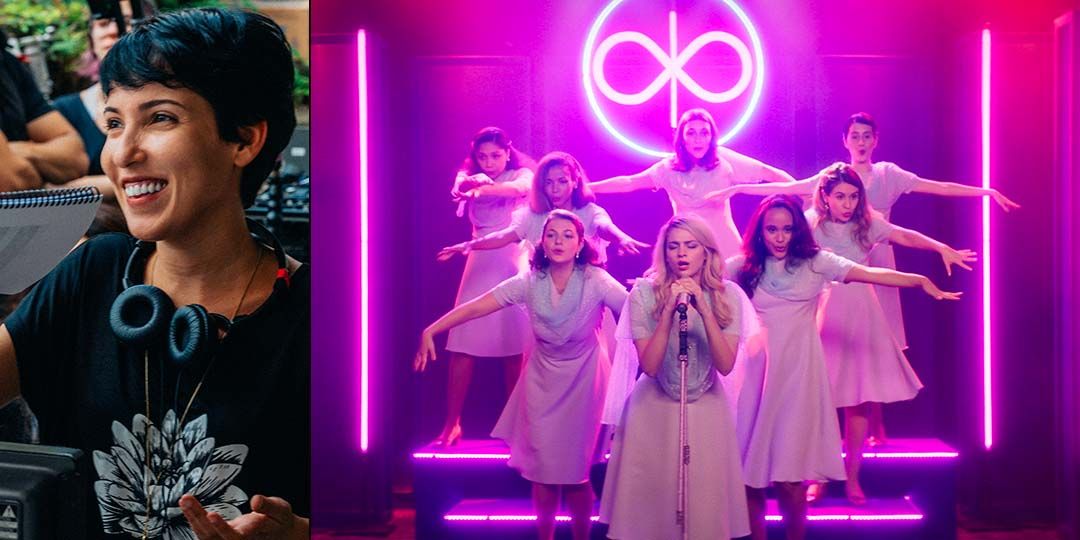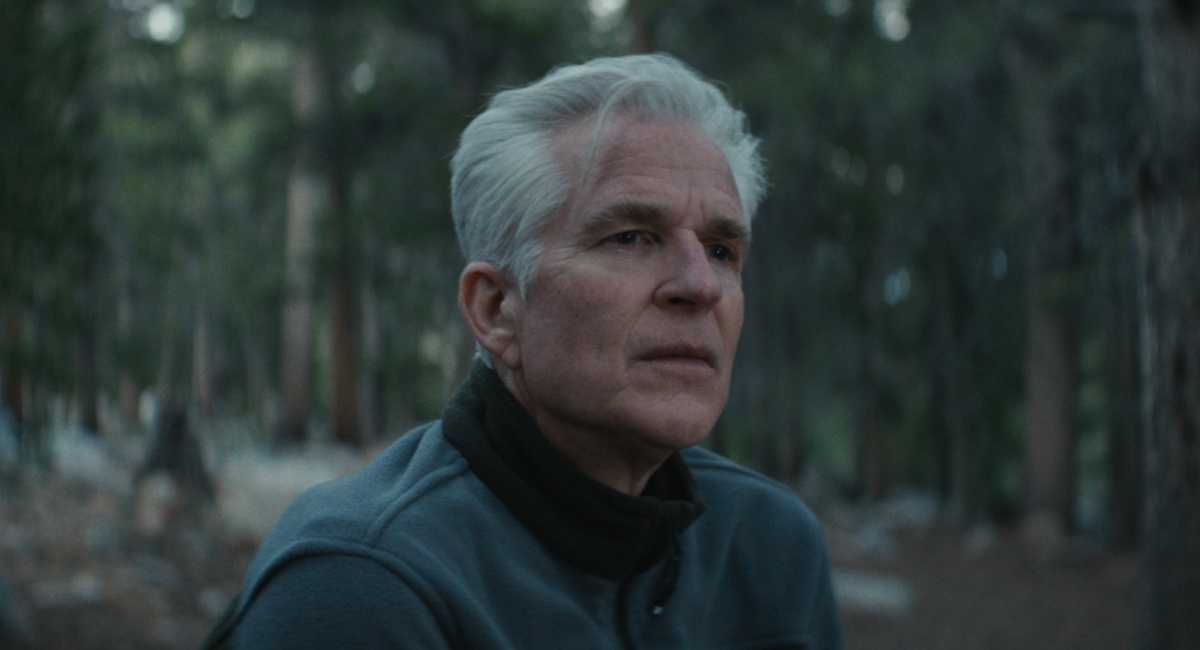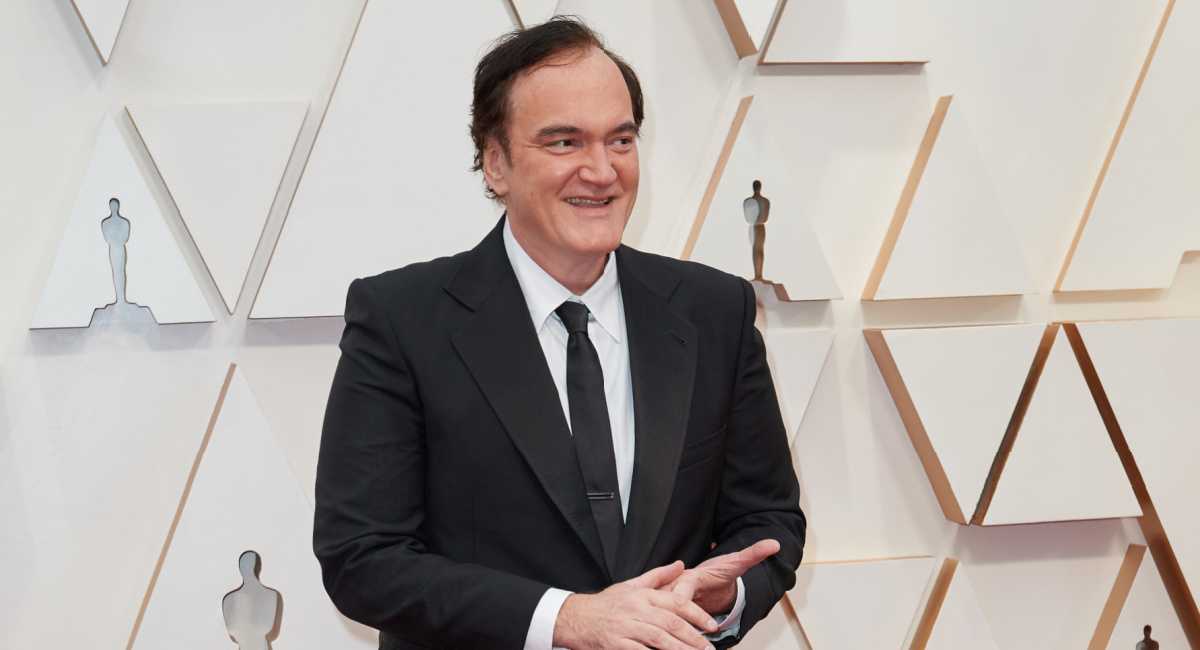Female Filmmakers in Focus (TIFF Edition): ‘Medusa’ Director Anita Rocha Da Silveira Talks About Her New Movie
The Brazilian director shares her inspirations for the movie and much she was involved with the movie’s music.

(Left) 'Medusa' director Anita Rocha Da Silveira. (R) A scene from the film.
Born and raised in Rio de Janeiro, Brazil, filmmaker Anita Rocha da Silveira studied cinema at Pontifical Catholic University of Rio de Janeiro. Since graduating in 2008 she has directed three short films ‘The Noon Vampire’, ‘Handball,’ which won a FIPRESCI Award, and ‘The Living Dead’, which was a Directors’ Fortnight selection at the 2012 Cannes Film Festival. Her debut feature film ‘Kill Me Please’ made its world premiere at the 2015 Venice Film Festival. It played at many other international film festivals, eventually winning awards for best director and best actress at Rio International Film Festival. Her most recent film, the hypnotic ‘Medusa,’ debuted earlier this year as part of the Directors’ Fortnight at the Cannes Film Festival.
Inspired by the rise of radical evangelical Christian factions and women-on-women violence in her native Brazil, ‘Medusa’ follows friends Mari (Mariana Oliveira) and Michele (Lara Tremouroux) whose church vocal group moonlight as vigilantes who beat up women for being too sinful. Their friendship is tested as Mari begins to question the abusive, patriarchal systems at play within their church. Visually inspired by Dario Argento’s ‘Suspiria,’ Silveira has crafted a mesmerizing and stylish modern take on the myth of Medusa and the need for female catharsis.
Silveira sat down with Moviefone ahead of the premiere of ‘Medusa’ as part of the Contemporary World Cinema section at the Toronto International Film Festival.
Moviefone: Can you talk about the inspirations for the film?
Anita Rocha da Silveira: So around 2015, I started reading in the news some articles that were very similar, about girls ganging up to beat another girl. I read one where three girls got together, and they beat this girl and slashed her face. Then some weeks later, in another city in Brazil, another group of girls got together, and they cut a girl’s hair to try to make her ugly. So I started to read a lot of news that was very similar. And they all have this point about the woman who was beat up was considered promiscuous in some way. A lot of them used the social networks to look at photos that they were posting, and who was liking them. It was very important to make the girl look ugly. And that made me remember the myth of Medusa. Because Medusa was punished by the loss of her beauty. In a lot of versions she was raped, in others that she has sex with Poseidon. But basically, because she was not a virgin, Athena, who was a virgin and others transformed her into this horrible creature. So my starting point was to talk about how much machismo can be part of this structure of the society. Even in a myth from hundreds and hundreds of years ago, I'm sure today you can find it reverberating, like women getting together to beat another woman. So that was the starting point for ‘Medusa’.
MF: Your use of sink and drains in the film is really interesting.
Silveira: It marks some transformations of the character in the film. The first one with the green mask, that moment is so integrated with the character. And then Mari’s cut, and the other one where Michele takes her makeup off. That for me is a very important one, when she stops using the makeup that she was wearing all day long. Every day she put the same makeup, the same hair, and this was the moment that she finally washes the makeup away.
MF: I thought your use of videos within the film was so great.
Silveira: I like the idea of getting on and off the image in a film, and then there's a film inside the film. I like the idea of somehow calling attention to the fact that there's a film inside a film inside a film.
MF: How did you cast the film?
Silveira: Mari Oliveira (Mari) was in my previous film. I’ve known her for some years now. The first time I met her, she was 15. I always had her in mind while I was writing ‘Medusa’. In my head, she was like the most important secondary character. She was such an amazing actress and someone so nice to work with and so grounded and so smart. When I started to write ‘Medusa’ I always had her in mind, but for the other girls and the boys I made open calls.
We tested a lot of people because it was a young cast. I tested a lot of girls for Michele before choosing Lara Tremouroux. Something that I like about Lara is that she has a crooked mouth. That's something that other jobs were always trying to fix, but that for me, it gives some tension about Michele, because she's always trying to look so perfect, but then she has a mouth a little bit crooked. She also sings so well, which was something very important to me. For some of the characters, I needed girls who could sing. She has a more classical beauty, that is what's considered a beauty in the mainstream, like in a more colonial point of view in Brazil. In many cultures, it's like this idea that the beautiful person she's thin, she's light, she has blonde hair. I wanted this character to be this type of beauty that mainstream people consider what's the most attractive. Because she has to impersonate what's supposed to be perfect. Some people even criticize me because it goes to her because she’s too pretty, but no, it has to be a statement on what people think is pretty. That's why she's the leader. That's why she sings in front and is the leader of the group, because you have these attributes that people think she is the pretty one.
MF: How did you choose the white masks the girl gang wears?
Silveira: We test a lot. It was always supposed to be a white mask, but we tested a lot. We bought a lot of masks. The mask we chose was actually from some anime character, we just peeled off the features.
MF: Were they always intended to be white?
Silveira: Yeah, because there's this idea about being an angel, which is the nature of the founding of that group. There is this idea about white and purity, and also, it even has a racist aspect to it. That there is this purity of being angels, that they are serving God. So that's why they were white because they were serving God.
MF: The soundtrack is really stunning. Where did the original songs come from?
Silveira: The original songs with lyrics, like the ones in the church, I wrote them. The more diegetic ones, I have this friend of mine who does sound editing and worked with me since my first short film. He personally really loves 70s sounds, like from Dario Argento and John Carpenter. That's the kind of thing that he loves. A few of the church songs are versions of our popular songs, and the other is public domain - "House of the Rising Sun" is public domain. For the cover versions, it started because we didn't have the budget to pay for both rights. So I said let’s only pay for one of the rights, the composer’s rights, and let’s cover the song. That’s why there’s cover versions, because we didn't have the money.
MF: Had Nath Rodrigues already covered "Baby It’s You" or was that produced for the film?
Silveira: I had a friend of mine who is a musical producer and I called him and said hey, I want to do this. He invited this amazing singer called Nath Rodrigues to do it for the film. So we recorded it in a music studio in his home.
MF: When the film was over, I was trying to find it to listen to it and couldn’t.
Silveira: Yeah, it’s only for the film. I think only the Siouxsie and the Banshees song was the original version because that one was at an amazing price. They understood that we were Brazilian and didn't have the money. The label gave us a great price for the song. Thank you so much.
MF: What was the research process like for Michele’s Christian YouTube channel?
Silveira: There's a lot of internet. Now in Brazil, you can find a lot of YouTubers that serve this ultra-conservative lifestyle, most of them evangelical, and they have like really pop videos, they're very charismatic, but when you listen they say a lot of crap. You start to understand the content. For example, there's a girl that inspired me to construct Michele. She's a very popular YouTuber, and her theme is “I fight for the end of feminism”. She was very cute and very, very bubbly, saying how women should be submissive to men and how women should be taking care of their appearance, how to show the guys how the feminists are, like ruining the world, and we should all blame feminists. They’re all from upper middle class families with money who went to college, and say all this bullshit in these are very high quality, well done videos. When I started researching, I found a lot of these ultra-conservative YouTubers like her, who manage to do these very appealing, high quality videos with jump cuts and things like that. So they're putting a lot of effort in doing videos that are appealing to the youth.
The whole church part of the film, for me, is the most realistic. The boys were inspired by a real army from a very evangelical church in Brazil that put together male youth groups that look like armies. All the speeches of the minister were inspired by real speeches from famous ministers I watched on YouTube. In the church aspect, I tried to be more close to reality because their reality is already a lot like a horror film. The other parts, like the comatose house and many other aspects, there's a lot of fantasy there. But the church, what they say, the speeches, how they behave, is all very close to reality.
MF: You mentioned John Carpenter, and Dario Argento, or were there any other sort of visual inspirations for the film?
Silveira: The main inspiration for the film’s aesthetic was ‘Suspiria’. Not so much Carpenter, that was more for the soundtrack. But like Brian De Palma’s ‘Carrie’ and a lot of 70s movies that I really love. They are usually the inspiration for me in the use of colors because I really want to choose the colors on the set, not to do them in post-production. So we shot with the colors. Because now a lot of people are shooting in a really plain way, and then in the post-production they say now let’s put green and red. But we used colors on set. We thought about that from the beginning of the production.
MF: When it’s over, how do you hope the audience feels?
Silveira: Feel like screaming! I think a lot of people want a film to have a happy ending. In my other film, the ending was super melancholic. This one I decided to do like a happy ending, but like my kind of happy ending. There's also the message of the girls to be together. Even if during the film their friendships can be considered abusive, toxic, one's not the best friend to one another, in the end that friendship is what they have. It’s better to stick to women than to submit to the patriarchal church. So at the end, they decide they have to fight together and realize that they have to stick together. So hopefully, it has that message of union. Also, sometimes if you have to, sometimes it’s good to scream.
MF: Can you recommend another female director for readers to seek out?
Silveira: I forgot to mention Claire Denis earlier. Like ‘Trouble Every Day’ and ‘Beau Travail’. I love Claire Denis, especially ‘Trouble Every Day’. I love Lucrecia Martel so much, especially her first film ‘La Ciénaga’. As inspirations, I think both Claire Denis and Lucrecia Martel are strong.
MF: What aspects of their filmmaking do you love?
Silveira: I think with Claire Denis, there is something about the way that she shoots bodies and how they lose control. Her characters are always about to lose control about something. I relate to that. There is this aspect of things being out of control all the time that I really like. I also like when she shoots the human body, she is very close to them. Lucrecia, I really like her first three films because of the way she portrays women. With ‘Zama’ I couldn’t relate so much, but I really loved her three first films and the way she got into these female characters in a very deep way. Like the lead in ‘The Headless Woman’ is an amazing character. I really like that.
'Medusa' is part of the Contemporary World Cinema series at the Toronto International Film Festival this year.




















